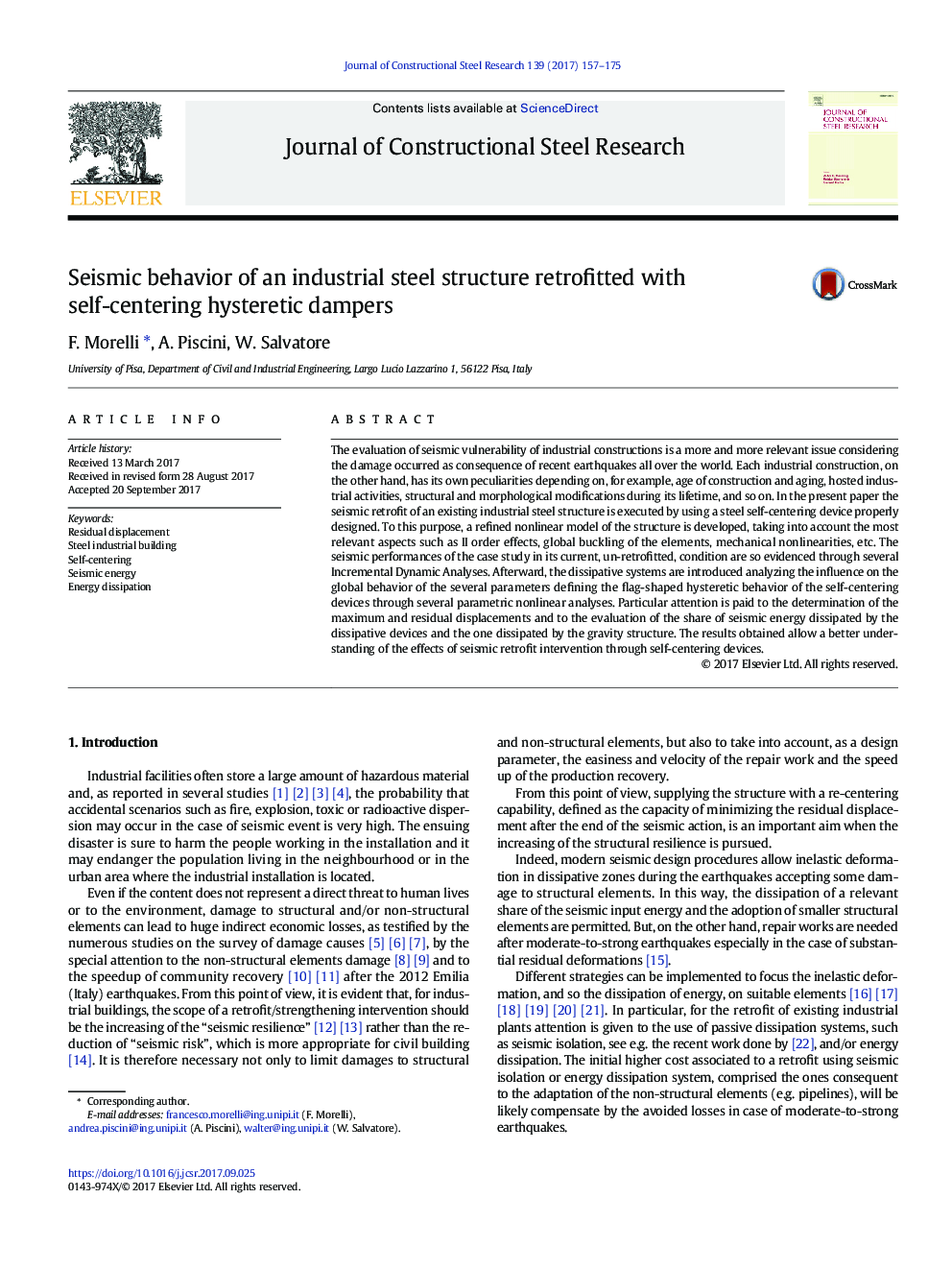| Article ID | Journal | Published Year | Pages | File Type |
|---|---|---|---|---|
| 6751285 | Journal of Constructional Steel Research | 2017 | 19 Pages |
Abstract
The evaluation of seismic vulnerability of industrial constructions is a more and more relevant issue considering the damage occurred as consequence of recent earthquakes all over the world. Each industrial construction, on the other hand, has its own peculiarities depending on, for example, age of construction and aging, hosted industrial activities, structural and morphological modifications during its lifetime, and so on. In the present paper the seismic retrofit of an existing industrial steel structure is executed by using a steel self-centering device properly designed. To this purpose, a refined nonlinear model of the structure is developed, taking into account the most relevant aspects such as II order effects, global buckling of the elements, mechanical nonlinearities, etc. The seismic performances of the case study in its current, un-retrofitted, condition are so evidenced through several Incremental Dynamic Analyses. Afterward, the dissipative systems are introduced analyzing the influence on the global behavior of the several parameters defining the flag-shaped hysteretic behavior of the self-centering devices through several parametric nonlinear analyses. Particular attention is paid to the determination of the maximum and residual displacements and to the evaluation of the share of seismic energy dissipated by the dissipative devices and the one dissipated by the gravity structure. The results obtained allow a better understanding of the effects of seismic retrofit intervention through self-centering devices.
Related Topics
Physical Sciences and Engineering
Engineering
Civil and Structural Engineering
Authors
F. Morelli, A. Piscini, W. Salvatore,
